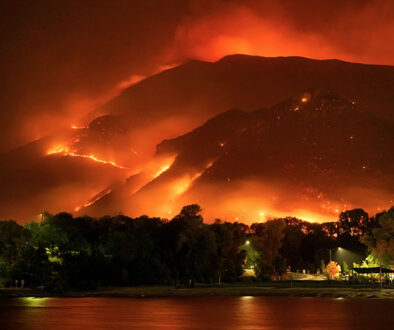Tiny oceanic plankton adapted to warming during the last ice age, but probably won’t survive future climate change
1) Orbulina universa, (2) Sphaeroidinella dehiscens, (3) Globigerinoides sacculifer, (4) Globigerinoides conglobatus, (5) Globigerinoides ruber (white), (6) Globigerinoides ruber (pink), (7) Globoturborotalita rubescens, (8) Globoturborotalita tenella, (9) Globigerinella calida, (10) Globigerinella siphonifera Type I, (11) Globigerinella siphonifera Type II, (12) Globigerinella adamsi, (13) Globigerina bulloides, (14) Turborotalita quinqueloba, (15) Turborotalita humilis, (16) Hastigerina pelagica, (17) Hastigerinella digitata, (18) Neogloboquadrina incompta, (19) Neogloboquadrina pachyderma, (20) Neogloboquadrina dutertrei, (21) Pulleniatina obliquiloculata, (22) Globorotalia inflata, (23) Globorotalia menardii, (24) Globorotalia scitula, (25) Globorotalia crassaformis, (26) Globorotalia truncatulinoides, (27) Candeina nitida, (28) Globigerinita glutinata, (29) Globigerinita uvula, and (30) Tenuitella fleisheri. Images by Haruka Takagi, Katsunori Kimoto, Tetsuichi Fujiki, Hiroaki Saito, Christiane Schmidt , Michal Kucera and Kazuyoshi Moriya CC BY-SA 4.0 via Wikimedia Commons
_________________________________________________________________________________________
Global temperature records are expected to exceed the 1.5 °C threshold for the first time this year. This has happened much sooner than predicted. So can life on the planet adapt quickly enough?
In our new research, published today in Nature, we explored the ability of tiny marine organisms called plankton to adapt to global warming. Our conclusion: some plankton are less able to adapt now than they were in the past.
Plankton live in the top few metres of ocean. These algae (phytoplankton) and animals (zooplankton) are transported by ocean currents as they do not actively swim.
Climate change is increasing the frequency of heatwaves in the sea. But predicting the future effects of climate change is difficult because some projections depend on ocean physics and chemistry, while others consider the effects on ecosystems and their services.
Some data suggest that current climate change have already altered the marine plankton dramatically. Models project a shift of plankton towards both poles (where ocean temperatures are cooler), and losses to zooplankton in the tropics but might not predict the patterns we see in data. Satellite data for plankton biomass are still too short term to determine trends through time.
To overcome these problems, we have compared how plankton responded to past environmental change and modelled how they could respond to future climate changes. As the scientist Charles Lyell said, “the past is the key to the present”.
We explored one of the best fossil records from a group of marine plankton with hard shells called Foraminifera. This comprehensive database of current and past distributions, compiled by researchers at the University of Bremen, has been collected by hundreds of scientists from the seafloor across the globe since the 1960s. We compared data from the last ice age, around 21,000 years ago, and modern records to see what happened when the world has previously warmed.
We used computational models, which combine climate trends with traits of marine plankton and their effect on marine plankton, to simulate the oceanic ecosystems from the last ice age to the pre-industrial age. Comparing the model with the data from the fossil record is giving us support that the model simulated the rules determining plankton growth and distribution.
We found that some subtropical and tropical species’ optimum temperature for peak growth and reproduction could deal with seawater warming in the past, supported by both fossil data and model. Colder water species of plankton managed to drift to flourish under more favourable water temperatures.
Our analysis shows that Foraminifera could handle the natural climate change, even without the need to adapt via evolution. But could they deal with the current warming and future changes in ocean conditions, such as temperature?
Future of the food chain
We used this model to predict the future under four different degrees of warming from 1.5 to 4 °C. Unfortunately, this type of plankton’s ability to deal with climate change is much more limited than it was during past warming. Our study highlights the difference between faster human-induced and slower-paced geological warming for marine plankton. Current climate change is too rapid and is reducing food supply due to ocean stratification, both making plankton difficult to adapt to this time.
Phytoplankton produce around 50% of the world’s oxygen. So every second breath we take comes from marine algae, while the rest comes from plants on land. Some plankton eat other plankton. That in turn gets eaten by fish and then marine mammals, so energy transfers further up the food chain. As it photosynthesises, phytoplankton is also a natural carbon fixation machine, storing 45 times more carbon than the atmosphere.
Around the world, many people depend heavily on food from the ocean as their primary protein sources. When climate change threatens marine plankton, this has huge knock-on effects throughout the rest of the marine food web. Plankton-eating marine mammals like whales won’t have enough food to prey on and there’ll be fewer fish to eat for predators (and people). Reducing warming magnitude and slowing down the warming rate are necessary to protect ocean health.




